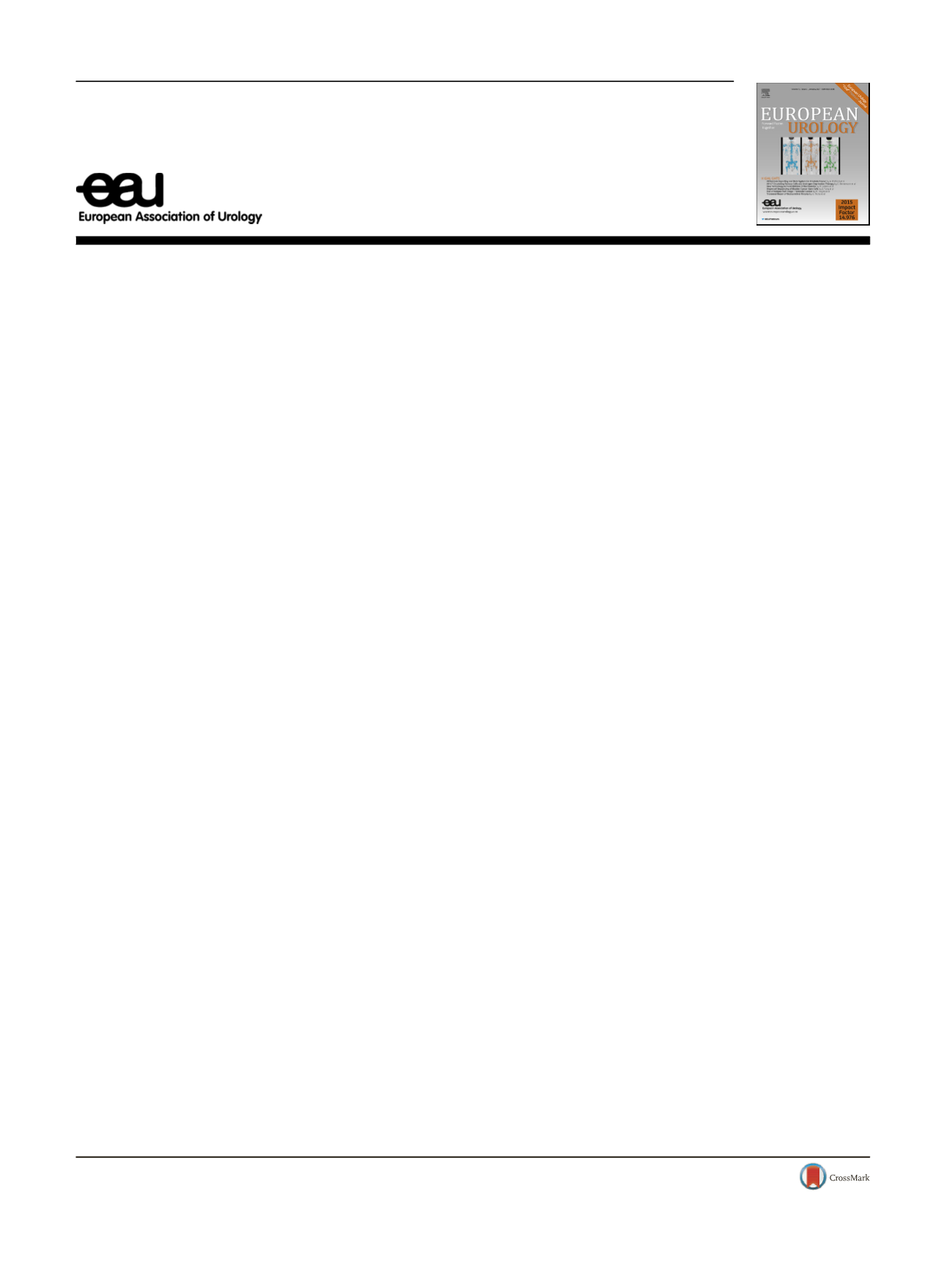

Platinum Priority
–
Editorial
Referring to the article published on pp. 899
–
907 of this issue
Real-time Watchful Surveillance Looks Like Active Waiting
Chris Bangma
* , Monique RoobolDepartment of Urology, Erasmus University Medical Centre, Rotterdam, The Netherlands
Once upon a time, many years ago, when active surveillance
(AS) had not yet been invented, and there were hardly any
computers that couldmanage the heavy computational load
for Markov modeling, a cohort of men diagnosed with
prostate cancer initially decided not to be treated; this
sounds like a fairy tale, but it was only 20 yr ago. The
substantial cohort of more than 600 Finnish, Swedish, and
Dutch men participated in the ERSPC prostate cancer
screening trial and were observed until death. No-one
followed a structured monitoring protocol with scheduled
repeat biopsies, and switches to active therapy were not
related to potential signs of progression. The overall 10-yr
survival was 77%, and no man died of prostate cancer
[1],
which represents excellent results.
This was not the first group on expected management.
T1a disease (
<
5% of transurethral resection of the prostate
samples positive for prostate cancer) was still frequently
seen because medical treatment for obstructive clinical
benign prostatic hyperplasia was not that common. The
guidelines at that time advised no further diagnostic or
therapeutic interventions in cases with well-differentiated
adenocarcinoma. Outcomes were good, with disease-
specific survival of
>
95% at 15 yr
[2].
Men diagnosed with low-risk prostate cancer may
choose monitoring instead of invasive treatment to avoid
unwanted side effects of (immediate) treatment. Alterna-
tively, they may opt for maximal security and control by
following protocols including rebiopsy, imaging, and even
genetic profiling of their tumor. Or they may choose
minimal monitoring by deciding not even to repeat
prostate-specific antigen (PSA) measurements and to wait
for certain symptoms to occur: the traditional watchful
waiting (WW). Most men who are comfortable with the
ease of an annual medical check-up like to follow their PSA
periodically, and certainly when they are older than 75 yr or
when serious comorbidity exists. They invent their own
follow-up protocol with which they are satisfied: active
waiting.
The modeled comparison of different AS protocols and
WW in the article by Loeb et al
[3]helps in advising men
with low-risk tumors according to the traditional param-
eters of Gleason score, estimated tumor size (in line with
the number of positive cores in systematic biopsies), and
PSA levels. Indeed, we are unable to provide level 1 scientific
evidence from clinical studies, and we will never be able to.
The modeling tries to map uncertainties around the impact
of events such as biopsies and treatment on quality of life
(QOL) as much as possible by using utilities taken from the
literature.
The model illustrates the theoretical remaining (quality-
adjusted) life expectancy after diagnosis of localized
prostate cancer when following either a WW approach or
an AS protocol, assuming 100% compliance with the
different diagnostic tests. But real life is different. Strict
compliance to protocols appears to be difficult for patients
and physicians
[4,5] ,and protocol adjustment over time to
preferences that minimize diagnostic interventions includ-
ing biopsies and PSA measurements is evident. We do not
know about imaging compliance, and this might be very
dependent on nonmedical factors such as availability and
reimbursement of costs.
Some of the authors
’
conclusions follow our intuition
and are self-evident. Following a strict protocol (including
invasive treatment when tumor reclassification towards
higher risk occurs) provides better clinical outcomes than
waiting for symptoms of metastatic disease. Men with
localized prostatic tumors will know that, because they
have been confronted with that information by the time
E U R O P E A N U R O L O GY 7 2 ( 2 0 17 ) 9 0 8 – 9 0 9available at
www.scienced irect.comjournal homepage:
www.europeanurology.comDOI of original article:
http://dx.doi.org/10.1016/j.eururo.2017.07.018 .* Corresponding author. Department of Urology, Erasmus University Medical Centre, P.O. Box 2040, 3000 CA Rotterdam, The Netherlands.
Tel. +31 10 7033607.
E-mail address:
c.h.bangma@erasmusmc.nl(C. Bangma).
http://dx.doi.org/10.1016/j.eururo.2017.08.0030302-2838/© 2017 European Association of Urology. Published by Elsevier B.V. All rights reserved.
















